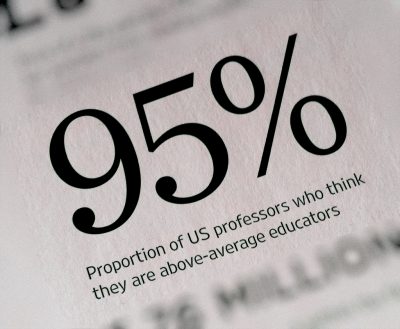Self-Enhancement and Self-Effacement
Related to self-concept is self-enhancement, the processes that we use to bolster self-esteem. Early research linked enhancement with individualistic cultures (Kitayama et al., 1999; Heine et al., 1999) however evidence for the culturally specific model has been mixed. The more commonly accepted view, pancultural perspective, argues that all cultures engage in enhancement but how, when and to what extent differs by culture (Brown, 2010; Becker et al., 2014; Sedikides et al., 2015). Cai and colleagues (2016) explored a pancultural theory of self-enhancement in Western (US) and Eastern (China) samples. Results revealed that participants endorsed more positive traits when describing themselves and also endorsed more negative traits as non-self-descriptive. The degree of this effect was higher in the Western than Eastern sample confirming that self-enhancement is positive in both cultures but it is higher among the Western sample.
Imagine you are the lead on a major work project and have been asked to provide a status update on the project to the executive board. You and your team spend hours preparing the presentation. At the end of the presentation, one of the board members congratulates you on the project and the presentation. In reply you say, “I am dedicated to this project and work really hard to meet the expectations.” This could be considered an example of self-enhancement because you emphasize your dedication and role to the project.
Self-effacement is the tendency to downplay one’s virtues or characteristic. In general Asians tend to be more self-effacing (although most studies only use samples from Japan and China) (Kurman, 2003). Under normal conditions, self-effacement is a facet of modesty and is not a lack of confidence or of self-esteem. Self-effacement reflects cultural norms and in some collectivist cultures, such as in China and Japan, consider modesty a virtue. Self-effacing tactics are used to reduce the social risk of offending others so in this way self-effacement is not linked to self-esteem.
Let’s consider our earlier scenario and the congratulations offered by a board member. If this time you say, “It had nothing to do with me, it is my team.” This could be considered an example of self-effacement because you understate your role and emphasize the team members.
Most of the research in this area has focused on cross-cultural research between Western and Eastern cultures. Suzuki and colleagues (2008) examined the role of self-enhancement and self-effacement and reactions to criticism among multicultural, female youth in the United States. Results revealed that European American and African American youth had more self-enhancing reactions to praise. Asian American and Hispanic youth were less self-enhancing and more self-effacing than the other two groups. The differences in reactions to praise were explained by differences in generational histories in the United States and cultural exposure. The youth with the highest self-enhancing reactions (European Americans and African Americans) were all born in the United States with greater exposure to individualist norms.

Asian American and Hispanic study participants reported that at least one person in their household were born abroad in less individualist and more collectivist cultures. These differences explain why the Asian American and Hispanic youths might have had more self-effacing reactions.
Better than average effect (BTAE; Wylie, 1979) is considered a form of bias or inaccuracy in self-assessment because while most people are average, only a minority of people recognize this reality. Research using the direct method asks participants to evaluate themselves in comparison to an average person on a single test (scale). Using the indirect method participates rate themselves and the average person on separate scales and average evaluation is subtracted from the ratings. Research on the BTAE that in the United States adults typically consider themselves to be more intelligent and more attractive than average and this effect was stronger for male than females. Early studies found that BTAE was associated with individualistic and not collectivist cultures; one researcher even asserted that it was not found in Japan but this research was not conclusive. It is possible that BTAE is correlated with age. Zell (2016) found that older adults rated themselves worse than average on some age-related measures. One study that examined prisoners and BTAE found that a significant number considered themselves to be more prosocial than other prisoners (Sedikides, Meek, Alicke & Taylor, 2013).

